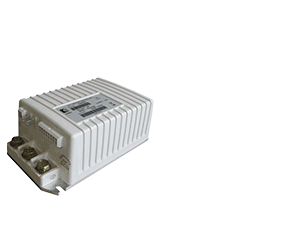Maintaining a golf car fleet at peak efficiency requires knowing how long the batteries will last between recharges on each vehicle. To do this, one needs to understand the many factors that affect battery capacity. A battery’s capacity is usually specified as either the runtime in minutes or the amp-hour capacity the battery can deliver under a specified load or for a specified period of time. Battery manufacturers indicate this as a series of ratings on the battery’s label and/or in a specification sheet.
Determining the actual available capacity of any deep-cycle, flooded lead-acid battery, however, is not that simple. There are other factors that fleet managers need to take into consideration to properly determine the battery’s expected runtime or capacity and its expected life.
Factors Affecting Battery Capacity
Knowing that batteries will deliver a limited amount of energy before they need to be recharged, it’s important to understand some factors that can affect the actual capacity that the battery can deliver, rather than what’s printed on the label. A new battery, for example, will not reach its peak or full rated capacity until the battery has undergone several cycles of charging and discharging. Deep cycle batteries often require as many as 75-125 cycles to reach their full rated capacity. Batteries with optimized design features, however, can reach full rated capacity in as few as 25 cycles.
The most important factor affecting battery capacity and runtime is the size of the discharge load in comparison to the size of the battery. This is important in understanding how to size the battery for the application and affects not only operation time in the application but also overall service life. Rated capacity is usually specified as a runtime at a fixed current of 25, 56, or 75 amps or as an amp-hour capacity at an hourly rating at 20 hours, 10 hours, 8 hours, 5 hours, or some other fixed time. To determine the discharge rating from an hourly rating, simply divide the amp-hour capacity by the hourly rating.
For example, if a battery is rated at 200 amp-hours at the 20 hour rate, the discharge rate would be 200 Ah / 20 hours = 10 amps.
Temperature also affects a battery’s capacity. For deep cycle batteries, the optimum temperature of the electrolyte during service is 80⁰F and is the standard at which ratings are determined. It’s important to know that for every 20 degrees below 80⁰F, the battery loses 10-12% of its available capacity. On the opposite side, electrolyte temperatures above 80⁰F will increase the battery’s performance, but operation at higher temperatures will also shorten overall battery life.
Achieving Maximum Capacity
In order to achieve maximum battery capacity over the life of your fleet, begin by making sure the batteries are fully charged before they are put into use. Secondly make sure the batteries receive regularly scheduled maintenance. This includes proper watering, opportunity charging, and performing an equalization charge after the first discharge and recharge (cycle) and once every 30 days during regular use.
Another way to maintain maximum battery capacity and extend battery cycle life is to manage the level of each discharge by limiting the depth of discharge (DOD) before charging. Most battery manufacturers recommend a 50% DOD for optimum cycle life vs runtime. (See chart below).
Finally, to maximize your fleet’s operational time and decrease downtime, try to use replacement batteries that have a higher rated capacity within the specified battery group size. It is important to recognize that average discharge rates for a given duty cycle will increase as batteries and equipment age or if additional loads are added to equipment. It may take more amp-hours and a higher rated replacement battery to perform the same duty cycle compared to when the equipment was new.




















